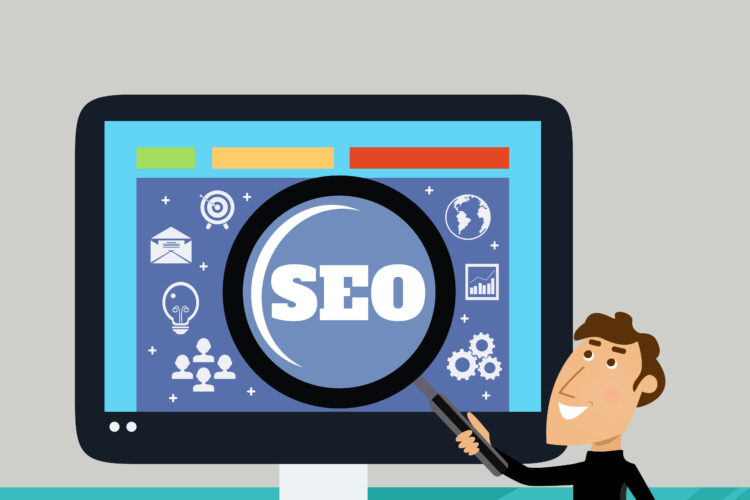
Over the past few years, Google has released its search engine algorithm which includes Panda, Penguin and Hummingbird were the biggest. Google has eased its customers to provide all benefits to its users. So here is the list of On-page SEO ranking factors in 2025. To calculate your website’s potential, you need to consider factors that contribute to its page ranking. SEO’s on-page ranking factor is the process of optimizing every article on your website to make good search engine rankings. There are various factors involved in this process, such as optimizing the tags, the HTML source code, and even the visual aspect of the site so that it appears on the first index of the website.
1. Site Speed:
First of all, Duplicate content on the sites is the biggest reason for the failure of sites. So, Google has announced various projects to handle site users with this problem. Now, the speed of the site is one of the factors that carry less weight. Now a day’s speed of almost all the sites is accurate, medium, and good. But if the page loading time is 7 sec can reduce the yield conversions.
2. Essential Tag Fundamentals:
Meta tags are also paid significant attention over the past few years and it is good to point out to get attention. The first fundamental is the title tag and this consists of only 60 characters. If this is exceeded to 60 then Google only shows the first 60 characters. It defines the title of your web page. And another fundamental tag is Meta description. The Meta description allows you to define exactly what you want to convey to the search engine. So, make it short and clear. It cannot exceed 160 characters.
3. Creating Content That Drives Traffic:
You all know that content is the backbone of a thriving business and ON-page SEO is the backbone of content marketing. So, you provide that type of content that grow your business very early. The content you are writing is well in-depth, solves all the problems of their customers, content is optimized for a high-volume keyword and is easy to share and it consists of fresh material and hot trends. 76% of total online shoppers read the content and then decided what is the profile of this business? That’s why 78% of CMOs consider custom content to be the future of digital marketing. So, users appreciate your content if it is well-written and not duplicated and also pass the comments and also subscribe to your future events. Good content must be linkable and also supply a demand.
4. Optimizing Crawlability:
SEO is not as tough. All you need to do is put a lot of effort into it if you want positive results. It consists of 3 basic elements that are: Crawlability, Content, and Link building. Crawlability is actually the part of the website that allowed its pages to be indexed by search engines. Improving crawl ability can boost the rankings. Now your content is remarkable and will help you to improve your search rankings. Duplicate content is immediately rejected by SEO. Your URL- The universal resource locator is the building block for your site. Do not change the URL address of your older posts. If you do so, your posts will not be longer to access and your link is broken.
5. Mobile Friendly:
Google now gives all the websites to access it on mobile phones. So, now these sites are mobile-friendly sites. If all the sites get prepared well before the update, they surely increase their rank, but sites that do not prepare them self for an update lose their concentration, and as a result, they fall on the rank of SEO. And their progress graph is lower and lower. So, you must always prepare your websites for updates, and then your site is called mobile-friendly.
6. Get in the game by optimizing for search intent:
You can grow your website with better planning and better content. In a cricket match, your main focus is to win the match but the team you played could not play well but this is not the last chance. You can change yourself in every moment of your life. So, if the content you provide is not good you can change the search engine of your website, you can change the theme of your site and also you can give the best pictures of the product on your website you want to sell. Google absolutely appreciates your work and your site rank is much better if your content even is not good.
7. Strategically place your target keyword in H1 tags:
Target keyword place in the sites is not good in 2018 and also in 2025 it still not plays a vital role but placing keywords is not a bad idea. You cannot include all the keywords in your content you can use its synonyms, antonyms and stop words, etc. Google is very smart about pointing things out, so it ensures that your content and keywords are on point. Most top-ranking websites use 1000 other keywords. You can use keywords for content in H1 tags, Meta description, and also for title tags.
8. Optimize your image file names (ALT tags):
Around one out of every thirty users of search engines are visually impaired, and as a result, they may be using a screen reader to assist them. When describing your photographs, you need to include alt tags. If you want your images to be described as accurately as possible, both in alt tags and file names, then you should make sure to do this. Google also uses image search results as an alt tag and file name. Some of the websites only use this technique. And they stand on the top rank in all the rankings of SEO.
9. Use schema markup to increase CTR:
With schema markup, search engines will be able to understand what your page is actually about. If you saw Google search results with star markup then you thoroughly understand the meaning and importance of Schema. But schema is not as important, it is up to you, if you want to add it to your website then you can. It having the main purpose of the site and page on the page will certainly increase the pages rankings.
10. Increase ‘Topical relevance’ to make things easy for Google:
If you are wondering why that’s a relevant page on SEO. It is something called phrase-based indexing. So, If You search Tasty omelet recipe. Google exactly takes to you that page that is relevant to your search. But if you search only for omelet recipes then Google shows hundreds of recipes for Omelet but no one you called that this is tasty. So, you can search topic-related searches in the search bar.
11. E-A-T:
The E-A-T framework stands for Expertise, Authoritativeness, and Trustworthiness, and is the framework that is applied by Google to evaluate the content writers, websites, and websites as a whole. Google always their site makers to write unique and premium content and this content is rewarded with higher rankings. In addition, E-A-T also plays a significant role in Google’s organic search results. Therefore, E-A-T has to be factored into your SEO strategy in a significant way.
12. Title tag:
The title tag is much important in SEO. Because it provides an initial clue as to what is this subject actually lies about and what is the purpose of this site. This feature is prominently in SEO pages as well as in the browser window. Title tag has itself impact on the organic rankings that’s why it is most overlooked.
13. Headlines:
If you want to improve your sites you must include the section headlines. Your headlines are actually the summary of your site with all the subject-related images and data and they must be shown on the top of your website in row sequence one by one.
14. Header Tags:
This is because heading tags are actually the elements of HTML or H1-H6 that use the H1-H6 tags to identify headings and subheadings in your content as opposed to other types of text (example: paragraph text). They are not as important but they improve your content and help the users or visitors easily to understand what the actually is a website about and what you are looking for in the site.
15. SEO Writing:
The purpose of SEO writing is to write content that has both the search engines and the users in mind. This is a strategy behind to written solid content. Remember, if you want to write content for the public then it must be clear, to the point, and easy to understand by the people.
16. Keyword Cannibalization:
It is important to keep in mind that targeting a similar keyword across multiple pages can result in keyword cannibalization, which could have some potentially disastrous consequences for your SEO efforts. If you have multiple pages ranking with the same keywords you are actually competing with yourself. It is important to identify whether keyword cannibalization exists on your site and resolve it in the right way.
17. Content Audit:
Most content creators focus on new and digital content for their websites. But it is important to audit your existing content because it helps you to evaluate your existing content and achieve its goal and gain ROI. It also helps to determine what type of content is working for you. A content audit can greatly help your SEO strategy and it must be done on regular basis.
18. User Engagement:
Enhancing your website’s on-page SEO elements is only half the battle. The other half lies in that the user does not bounce. If users continuously visit your site then interacting with them and help them to come back for more.
19. Use External Links:
External links to related pages help Google figure out your page’s topic. It also shows Google that your page is a hub of quality info. And this isn’t just a theory. The folks at Reboot Online ran an experiment to see if external links helped improve rankings.
20. Voice search SEO:
Voice search is also growing very fast nowadays. In addition, the best way to optimize your content is voice search. A Voice search study shows that Google loves to pull voice search results from FAQ pages.





